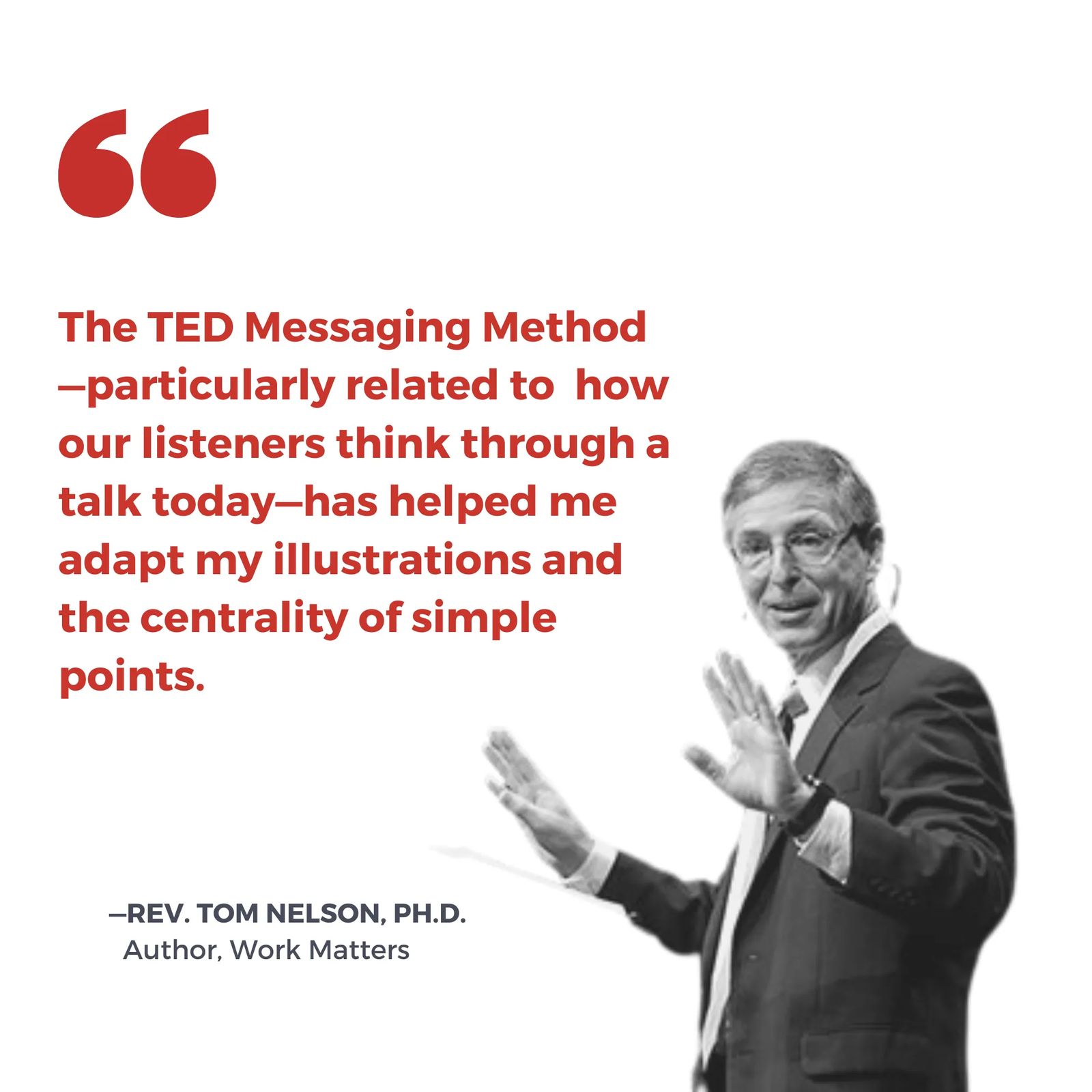Unveiling The 6 Shapes of Story
Decoding Kurt Vonnegut’s Narrative Arcs
By Devin D. Marks | Published April 14th, 2024
From ancient myths to modern blockbusters, stories have the power to connect with and compel audiences.
But beneath the surface of every narrative lies a hidden structure — a design that gives shape to the audience’s emotional arc.
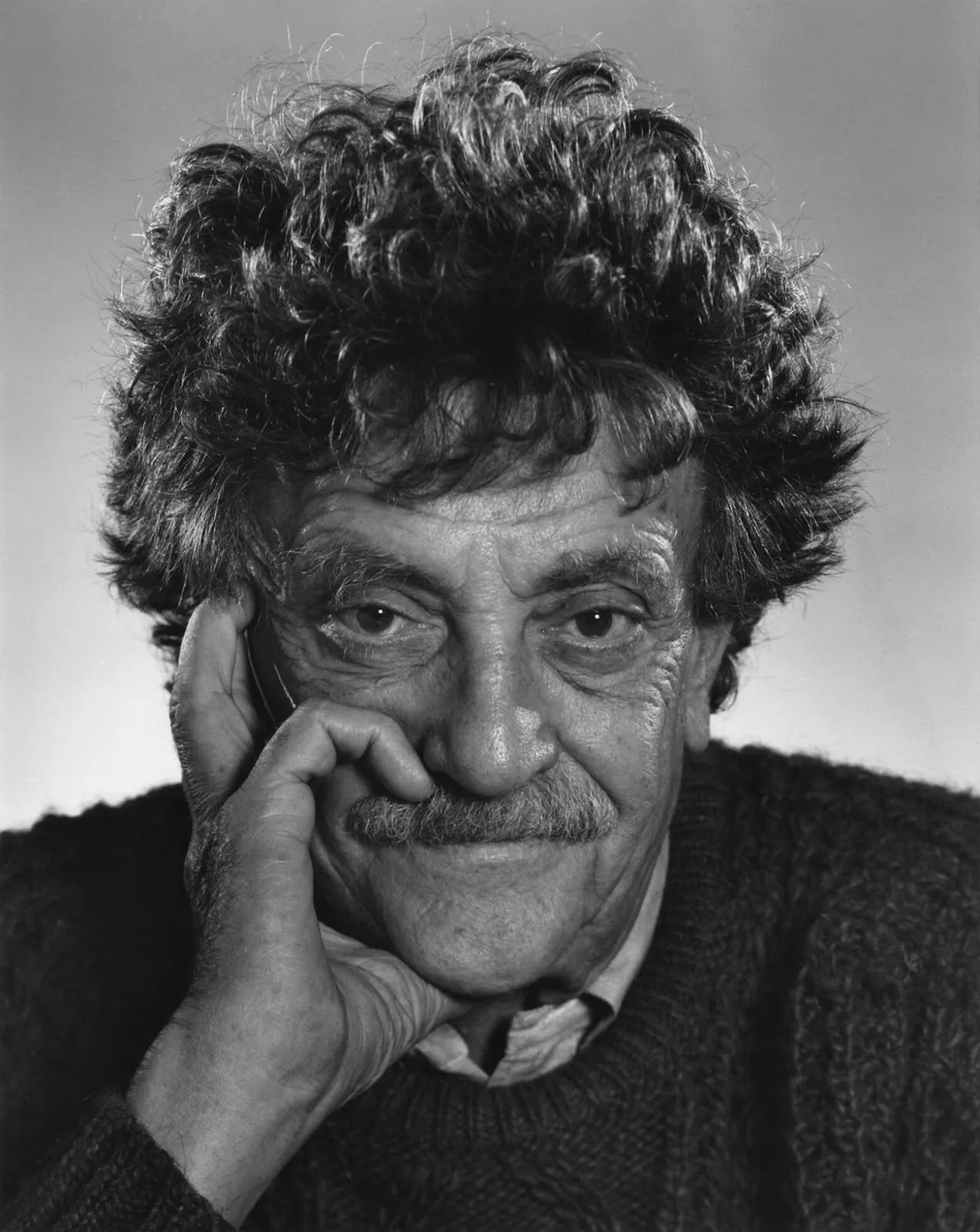
In the early 1980s, while in graduate school, Kurt Vonnegut proposed that the simple shapes of stories could be fed into computers.
At first, his professors scoffed; his master's thesis was rejected. But decades later, his theory was revived by mathematicians and computer scientists who began mapping narrative patterns.
In recent years, researchers at the University of Vermont and the University of Adelaide used sophisticated computing power and natural language processing (early AI-solutioning, c.2016) to analyze nearly 2,000 works of fiction.
Using sentiment analysis, they examined the emotional trajectory of each story and discovered overlap between plot points and emotional highs and lows. These findings indicated a strong correlation between narrative structure and emotional arc. Then they classified each into 6 core types of narratives based on the protagonist's journey.
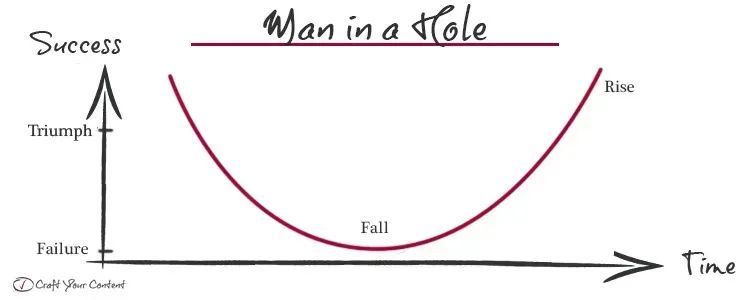
1) MAN IN A HOLE
The Man in a Hole archetype traces the journey of a character who experiences a sudden reversal of fortune, only to claw their way back to redemption. (Shape: Fall then Rise)
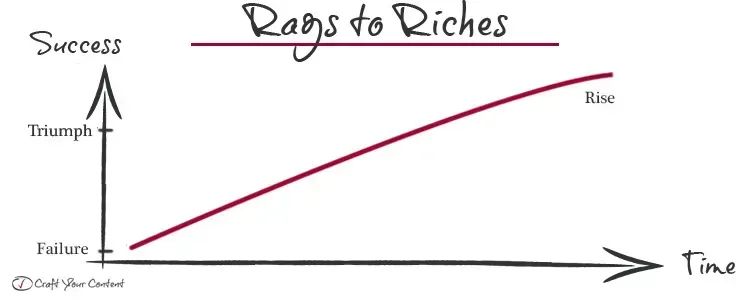
2) RAGS TO RICHES
This classic archetype follows the journey of a character who starts from humble beginnings and achieves success against all odds. (Shape: Rise)
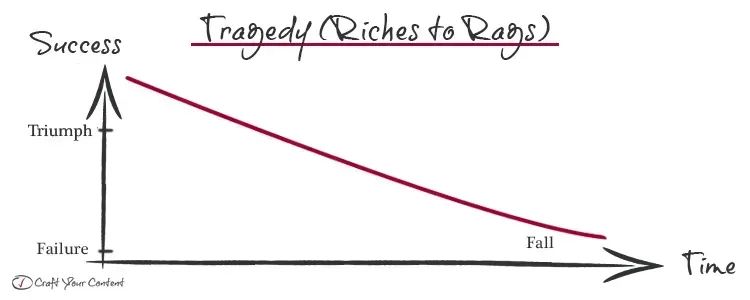
3) RICHES TO RAGS
In contrast to the Rags to Riches narrative, Riches to Rags stories explore the downfall of a once-prosperous protagonist. (Shape: Fall)
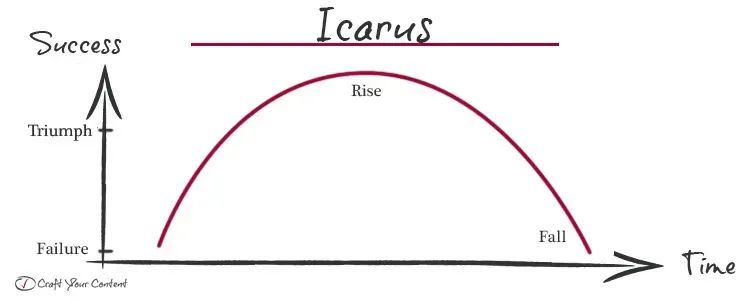
4) ICARUS
Named after the Greek myth of Icarus, this narrative arc follows a character whose ambition leads to their downfall. (Shape: Rise then Fall)
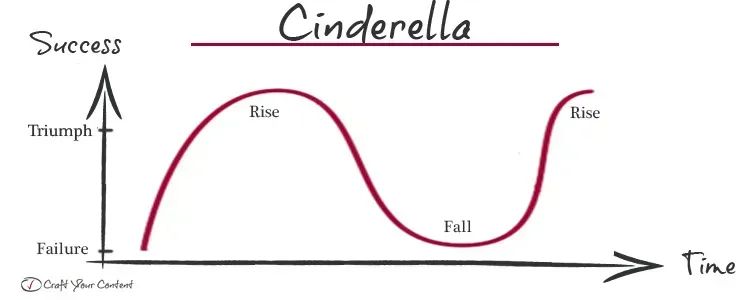
5) CINDERELLA
The Cinderella archetype is characterized by a rise, fall, and eventual rise to glory. (Shape: Rise then Fall then Rise)
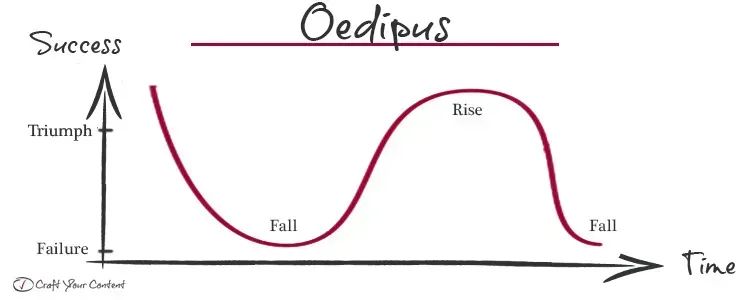
6) OEDIPUS
Named after the tragic hero of Greek mythology, the Oedipus narrative arc follows a character whose rise to fortune is followed by a precipitous fall. (Shape: Fall then Rise then Fall)
In the end, the researchers affirmed Vonnegut's creative assertions (short video here; article here) and underscored the enduring appeal of certain narrative structures.
In fact, even today his “Man in a Hole” archetype dominates TED Talk stages in the form of the STICKY Stories™ framework.
From the ancient myths to the digital narratives of TED stages, these archetypal patterns remind us of the timeless potential of storytelling to connect and compel.
Credits: 6 shape designs: CraftYourContent.com; Vonnegut portrait: Yousuf Karsh (c) 1990.
DEVIN D. MARKS one of the nation's leading "short talk" speaker trainers. His firm, CONNECT to COMPEL, has served 100s of speakers — including Harvard’s Dr. Robert Waldinger for his all-time Top 10 TEDx Talk. The result: 100s of millions of views for clients. He helps niche experts, authors, and leaders spread world-changing ideas.
You can reach Devin at 617.804.6020, or DM him here. His newsletters are here.
LET THE WORLD LIVE YOUR MESSAGE™

